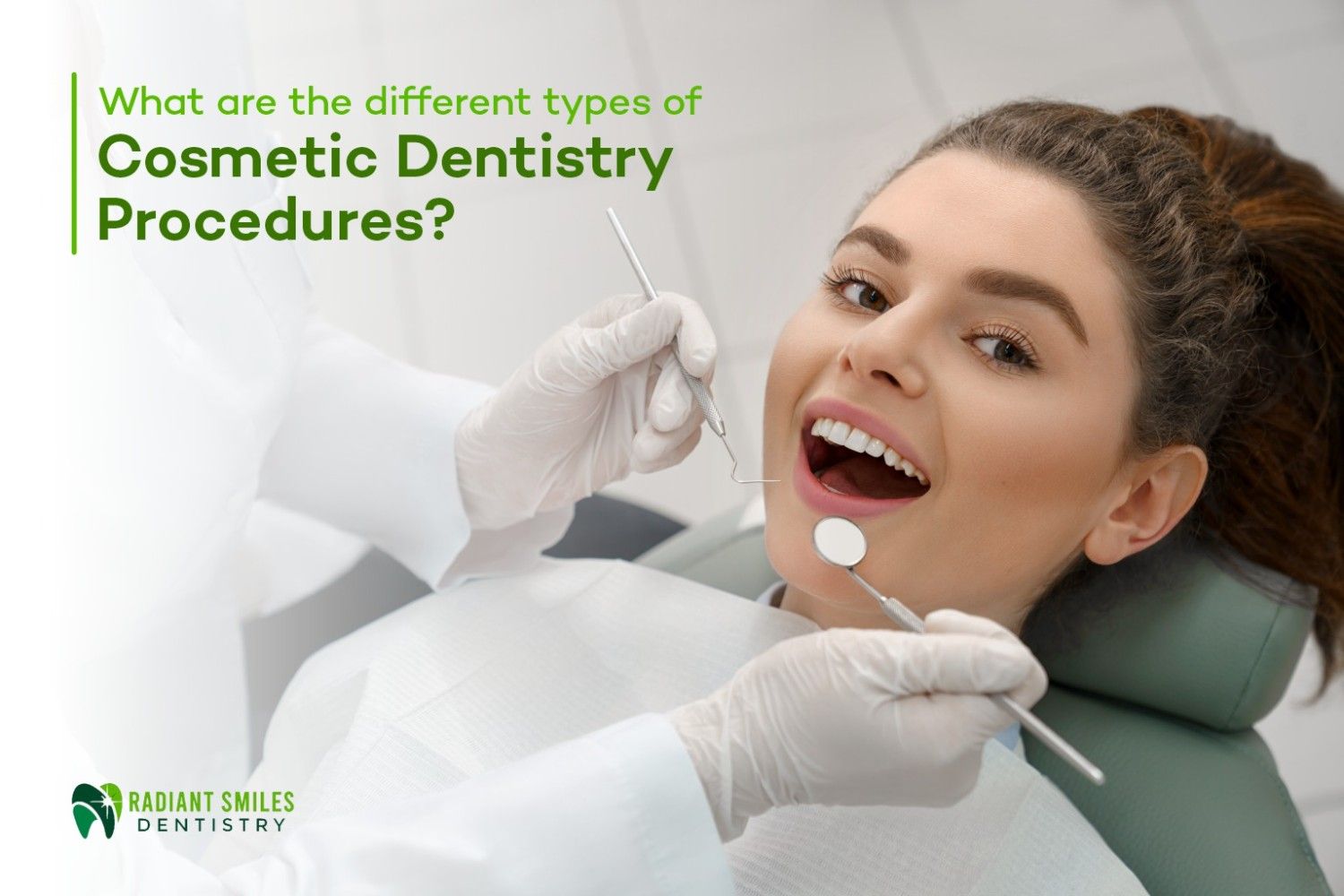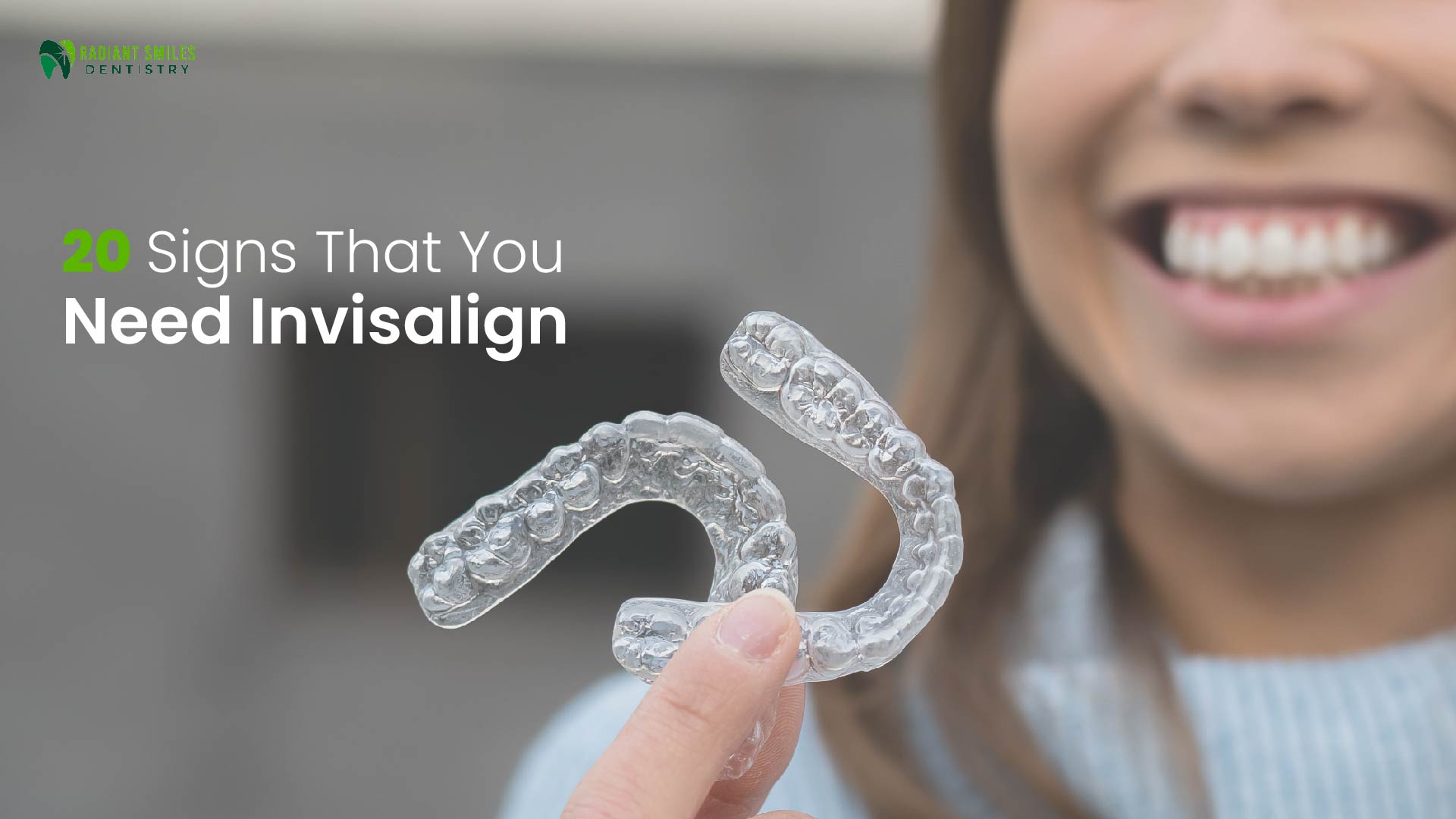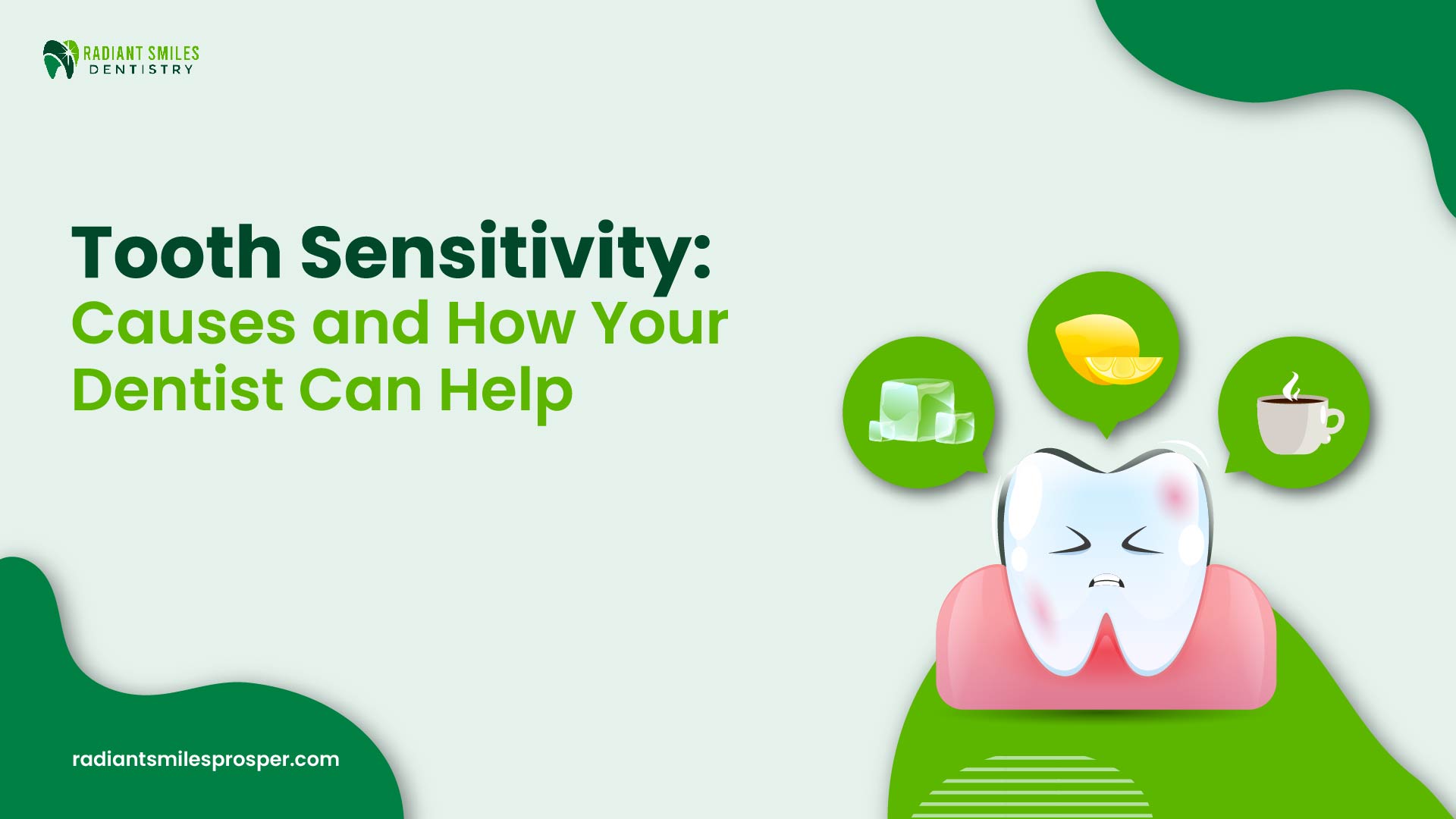Dental veneers are a popular cosmetic option for obtaining a perfect smile,...
What are the Different Types of Cosmetic Dentistry Procedures?

Introduction
In addition to being an indication of joy, a confident smile reflects one’s self-assurance and general state of being. In the contemporary era, where aesthetics predominate, the pursuit of an impeccable smile has propelled substantial progressions within the domain of dentistry. Particularly, cosmetic dentistry has become a symbol of optimism for individuals desiring to improve the aesthetic appeal of their teeth and exhibit a more assured smile. This all-encompassing manual examines the complexities of cosmetic dentistry, including its benefits, risks, interventions, and procedures.
Understanding Cosmetic Dentistry
A specialized subfield of dentistry, cosmetic dentistry aims to enhance the visual appeal of teeth, gums, and smiles as a whole. Conventional dentistry focuses on oral hygiene and the prevention, diagnosis, and treatment of oral diseases. In contrast, cosmetic dentistry encompasses concerns about tooth color, shape, size, alignment, and the overall aesthetics of the smile, in addition to functional aspects.
Placing optimal oral health and function alongside enhancing the inherent attractiveness of a patient’s smile is the fundamental objective of cosmetic dentistry. To accommodate individual preferences and requirements, cosmetic dentistry provides an extensive array of treatment options, including but not limited to aligning misaligned or crooked teeth, restoring chipped or cracked teeth, and brightening stained teeth.
Cosmetic Dentistry Procedures:
1. Teeth Whitening
Several factors, including advancing age, consuming specific foods and beverages, smoking, and maintaining inadequate oral hygiene, can contribute to the discoloration and staining of teeth. A common cosmetic dentistry procedure, teeth whitening, is alternatively referred to as teeth brightening. Its purpose is to eliminate discoloration and reinstate the intrinsic brilliance of the teeth.
Bleaching agents, including hydrogen peroxide or carbamide peroxide, are utilized in professional teeth whitening treatments administered by a dentist. These agents permeate the enamel to degrade stains and lighten the color of the teeth. Although in-office whitening treatments produce immediate outcomes, dentist-prescribed take-home whitening products enable patients to achieve gradual whitened teeth over a designated period.
2. Dental Veneers
Dental Veneers are custom-made, ultrathin shells adhered to the front surface of teeth to enhance their aesthetic appeal. These veneers are typically composed of composite resin or porcelain. To conceal flaws such as discoloration, chips, fissures, gaps, or uneven teeth, veneers are an effective alternative.
Dental veneers require minimal tooth preparation, which consists of removing a small quantity of enamel from the tooth surface to accommodate the veneer. After taking impressions of the teeth, a dental laboratory fabricates the veneers with care to ensure a flawless fit and an authentic aesthetic. Upon completion, dental cement is utilized to adhere the veneers to the teeth, instantaneously rejuvenating the smile.
3. Dental Bonding
Dental bonding is a cosmetic dentistry procedure utilized to restore the appearance of discolored or misshapen teeth, in addition to repairing chipped, cracked, or decayed teeth. It is also referred to as composite bonding or dental bonding. A tooth-colored composite resin material is applied directly to the tooth surface during the bonding procedure. The material is then shaped into the desired form and hardened using a specialized curing light.
Dental bonding is an adaptable, one-time dental visit procedure that requires minimal invasiveness. This material offers long-lasting and authentic-appearing outcomes, rendering it an optimal choice for reconstructing the appearance and functionality of impaired or damaged teeth.
4. Dental Implants
Dental implants are cutting-edge alternatives to absent teeth that provide a permanent and natural-looking substitute. In contrast to conventional prostheses or bridges, which are supported by the gums or adjacent teeth, dental implants are surgically inserted into the jawbone. During osseointegration, the implants become integrated with the surrounding bone tissue.
The three primary constituents of dental implants are the prosthetic crown, the implant fixture (a titanium nail), and the abutment. A custom-made crown, bridge, or denture is affixed to the abutment after the integration of the implant with the mandible. This process reinstates the functionality and aesthetics of the absent tooth or teeth. Dental implants imitate the appearance, feel, and functionality of natural teeth while preserving jawbone health and producing long-lasting results.
5. Inlays and Onlays
To restore teeth with modest to moderate decay or damage, inlays and onlays, also known as indirect fillings, are custom-made restorations. Onlays and inlays are manufactured in a dental laboratory using impressions of the prepared tooth, as opposed to traditional fillings which are molded into position within the mouth.
As opposed to onlays, which restore harm that extends to one or more cusps, inlays are utilized to fill cavities within the cusps (points) of the tooth. Dental cement is commonly used to adhere these restorations to the tooth surface; they are typically composed of porcelain, composite resin, or gold. By supporting and augmenting the tooth’s appearance, inlays and onlays offer a resilient and aesthetically pleasing method of maintaining the tooth’s natural structure.
6. Dental Crowns
Dental crowns, alternatively known as caps, are restorations in the form of teeth that completely enclose the exposed area of a compromised or weakened tooth above the gingival margin. When a tooth is restored in terms of size, shape, strength, and appearance, a crown safeguards it against additional decay or harm.
A variety of materials, including porcelain, ceramic, metal alloys, or a combination thereof, can be used to construct dental crowns. Favorable attributes of porcelain crowns include their capacity to replicate the translucency and color of natural teeth, as well as their authentic appearance. Obtaining a dental crown generally entails the following steps: tooth preparation, impression taking, crown fabrication in a dental laboratory, and the dentist performing the final placement and cementing.
7. Orthodontic Treatments
To enhance the appearance and functionality of the teeth, orthodontic treatments aim to rectify malocclusion (incorrect mandible relationships), misaligned teeth, and irregular bite patterns. Orthodontic alternatives, including transparent aligners and traditional braces, are both efficacious in their efforts to straighten teeth and attain a harmonious smile.
Braces are composed of wires, brackets, and bands that apply gradual, gentle pressure to the teeth to realign them progressively. Clear aligners, such as Invisalign, are custom-made, detachable trays that are virtually invisible and fit snugly over the teeth. They shift the teeth progressively into the desired position. In addition to enhancing the aesthetic appeal of the smile, orthodontic treatments facilitate oral hygiene through the enhancement of bite function and the simplification of tooth brushing.
8. Gum Contouring
Gum contouring, which is also referred to as tissue sculpting or gum reshaping, is a cosmetic dental procedure that creates a more balanced and symmetrical smile by removing superfluous gum tissue or reshaping the gums. Gummy smiles, or teeth that appear short, irregular, or disproportionate due to excessive gum tissue, diminish the overall aesthetic appeal of the smile.
The dentist uses specialized dental instruments or a laser to precisely sculpt the gum tissue to the desired size and shape during the gum contouring procedure. This contributes to the creation of a more harmonious gumline that elegantly frames the teeth and exposes more of the tooth surface. For optimal results, gum contouring may be performed independently or in conjunction with other cosmetic dental procedures.
Factors to Consider Before Choosing Cosmetic Dentistry
Although cosmetic dentistry procedures can bring about significant changes, several factors must be taken into account before beginning treatment:
- Oral Health Condition: Prioritize your oral health by addressing any underlying dental issues before pursuing cosmetic treatments, such as tooth decay, periodontal disease, or bite problems.
- Treatment Objectives: It is imperative to establish unambiguous expectations and desired results regarding the cosmetic dentistry procedure to verify that they correspond with the actual results.
- Financial Consideration: Take into account the overall treatment cost, which may encompass supplementary expenditures for consultations, follow-up appointments, or maintenance.
- Durability of Results: Gain knowledge regarding the anticipated duration of the cosmetic procedure’s effectiveness, as well as any necessary replacements or maintenance to preserve the procedure’s optimal results.
It is advisable to acquire knowledge regarding the potential hazards, adverse reactions, and complexities that may arise in connection with the selected cosmetic dental procedure. Consult your trusted cosmetic dentist regarding these matters.
Also Read: Understanding Restorative Dentistry: Types, Benefits, and Procedure
Benefits of Cosmetic Dentistry
Beyond mere smile aesthetic improvement, cosmetic dentistry offers an array of additional advantages:
- A gorgeous smile can contribute to an enhanced sense of self-assurance and confidence, resulting in an improved self-perception and perspective on life.
- Several cosmetic dentistry procedures provide additional benefits to the oral cavity and overall health, including but not limited to improved bite alignment, tooth restoration, and tooth replacement.
- A brilliant, symmetrical smile can erase years from one’s appearance and impart a sense of youthfulness and vitality.
- In social and professional interactions, a self-assured smile can create an enduring impact, facilitating access to novel prospects and connections.
- Cosmetic dentistry has the potential to greatly augment an individual’s quality of life and overall satisfaction through the resolution of aesthetic concerns and the restoration of dental function.
Cosmetic dentistry provides an array of solutions to assist individuals in attaining their desired smile, whether it be through the correction of minor imperfections or a complete transformation of their smile.
Also Read: Top 10 Things You Must Know Before Choosing Your Orthodontist in Prosper, Texas
Cosmetic Dentistry Risks and Limitations
Although the majority of cosmetic dentistry procedures are efficacious and risk-free, it is critical to acknowledge the potential limitations and hazards associated with each available treatment alternative:
- Some cosmetic procedures, including gum contouring and teeth whitening, may cause transient gum irritation or sensitivity, which typically resolves on its own.
- Allergic Reactions: It is advisable for patients who have allergies to specific dental materials or components utilized in cosmetic procedures to consult their dentist regarding alternative options.
- Long-term maintenance may be necessary for specific cosmetic procedures, such as dental veneers or implants. This may involve routine dental examinations, professional cleanings, and potentially the replacement or repair of the restoration.
- Although contemporary cosmetic dentistry methods provide predictable results, individual reactions to treatment may differ, and it may not always be possible to attain flawless symmetry or aesthetics.
Conclusion
Cosmetic dentistry has brought about a paradigm shift in the way individuals perceive and attain a beautiful smile by providing inventive resolutions to a diverse array of aesthetic issues while also improving their overall oral health and well-being. For individuals desiring to address specific concerns and objectives such as tooth whitening, smile realignment, tooth damage restoration, or tooth replacement, cosmetic dentistry offers a range of procedures that are customized to fulfill those requirements and aspirations.
You can initiate a process toward achieving a more radiant, health-conscious, and self-assured smile by discussing your treatment alternatives with the assistance of a proficient and seasoned cosmetic dentist. Constantly bear in mind that a radiant smile signifies inner fortitude, joy, and self-assurance, not merely an indication of physical attractiveness.
Leverage the potential of cosmetic dentistry to illuminate the world with your smile. Connect with us to book your appointment now!
| Recent Blog Post
The Role of Cosmetic Dentistry in Restoring Confidence After Tooth Loss
Dental veneers are a popular cosmetic option for obtaining a perfect smile,...
Tooth Sensitivity: Causes and How Your Dentist Can Help
Dental veneers are a popular cosmetic option for obtaining a perfect smile,...










